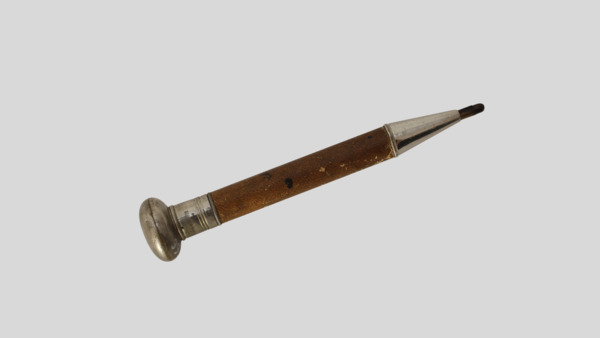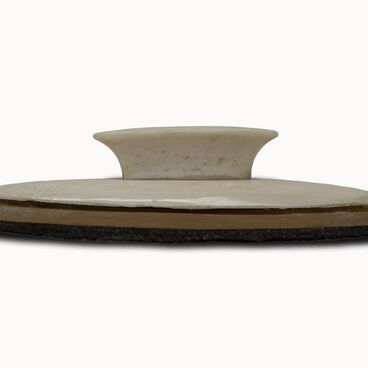The mechanical pencil from the collection of the Turinsk Museum is thought to have belonged to the family of the Decembrist Vasily Petrovich Ivashev. For a long time, this item and some other personal belongings were carefully protected and preserved as family heirlooms. The mechanical pencil was handed over to the museum as a gift from Tatyana Vasilievna Zuckschwerdt, the great-granddaughter of the Decembrist Ivashev, at the opening ceremony of the Turinsk Decembrists House Museum on December 7, 1993.
The mechanical pencil has the inscription “DPSM No. 22409/22039”. It is known that since Kamilla and Vasily Ivashev had been exiled first to Siberia and then to Turinsk, they sent over 5,000 letters to their relatives and friends. This number is true only according to the official records, there could have been much more of them, for there also existed unofficial correspondence channels.
The history of using pencils began in the 14th century when lead rods with zinc or tin were first introduced. Drawings made with such pencils were easily erased with improvised means, such as breadcrumb or pumice. Whereas silver was added, the lead became more resistant.
In the 16th century, a new material for making pencils was accidentally found in Cumberland, England — an unknown rock, almost black with a metallic sheen. At first, it was thought to be coal, however, it did not burn. Then it was believed to be lead, but the rock did not melt and was lighter than lead. One feature of this material was known for certain: it left a clear, well-visible trace when used to draw. That is how graphite was discovered. It was too soft for writing, because it crumbled, soiled the hands, and broke when pressed too hard.
The first pencil factory appeared in 1761 in Germany. The Germans came up with the idea of mixing graphite powder with sulfur and glue, getting an inexpensive rod, though of inferior quality. The modern pencil was invented by Nicolas-Jacques Conté who patented his invention in 1795. At the end of the 18th century, Joseph Hardtmuth patented the unique production of graphite and clay leads, launching the production of the famous KOH-I-NOOR pencils.
In 1869, the American Alonzo Townsend Cross invented a mechanical pencil: a graphite rod was placed in a metal tube and extended when necessary.
The mechanical pencil has the inscription “DPSM No. 22409/22039”. It is known that since Kamilla and Vasily Ivashev had been exiled first to Siberia and then to Turinsk, they sent over 5,000 letters to their relatives and friends. This number is true only according to the official records, there could have been much more of them, for there also existed unofficial correspondence channels.
The history of using pencils began in the 14th century when lead rods with zinc or tin were first introduced. Drawings made with such pencils were easily erased with improvised means, such as breadcrumb or pumice. Whereas silver was added, the lead became more resistant.
In the 16th century, a new material for making pencils was accidentally found in Cumberland, England — an unknown rock, almost black with a metallic sheen. At first, it was thought to be coal, however, it did not burn. Then it was believed to be lead, but the rock did not melt and was lighter than lead. One feature of this material was known for certain: it left a clear, well-visible trace when used to draw. That is how graphite was discovered. It was too soft for writing, because it crumbled, soiled the hands, and broke when pressed too hard.
The first pencil factory appeared in 1761 in Germany. The Germans came up with the idea of mixing graphite powder with sulfur and glue, getting an inexpensive rod, though of inferior quality. The modern pencil was invented by Nicolas-Jacques Conté who patented his invention in 1795. At the end of the 18th century, Joseph Hardtmuth patented the unique production of graphite and clay leads, launching the production of the famous KOH-I-NOOR pencils.
In 1869, the American Alonzo Townsend Cross invented a mechanical pencil: a graphite rod was placed in a metal tube and extended when necessary.



